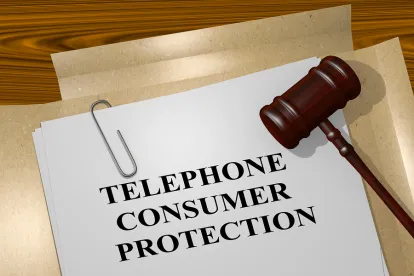The Seventh Circuit has recently joined the Second, Third, Sixth and Eleventh Circuits in adopting a narrow interpretation of Automatic Telephone Dialing System (ATDS) under the Telephone Consumer Protection Act (“TCPA”), one that excludes equipment that dials numbers from a customer database. See Gadelhak v. AT&T Services, Inc., No. 19-1738, — F.3d —-, 2020 WL 808270 (7th Cir. Feb. 19, 2020); see also Glasser v. Hilton Grand Vacations Co., 948 F.3d 1301 (11th Cir. Jan. 27, 2020); Gary v. Trueblue, Inc., 786 F. App’x 555 (6th Cir. Sept. 5, 2019); King v. Time Warner Cable, 894 F.3d 473 (2d Cir. 2018); Dominguez v. Yahoo, Inc., 894 F.3d 116 (3d Cir. 2018).
These decisions, however, conflict with the Ninth Circuit’s more expansive definition. See Marks v. Crunch San Diego, LLC, 904 F.3d 1041 (9th Cir. 2018). This split increases the pressure on the FCC to issue its long-expected ruling on ATDS, and perhaps increases the chance that the FCC will similarly narrow the definition of ATDS, significantly reducing the risk of liability under the TCPA. Given the split, it is also more likely that the U.S. Supreme Court may eventually issue its own ruling on ATDS.
——————————-
The TCPA generally prohibits making automated calls or text messages to cell phones without sufficient prior express consent and imposes statutory penalties ranging from $500 to $1,500 per call or text violation. In Gadelhak, the Seventh Circuit restricted the ability of plaintiffs to bring successful TCPA claims arising from automated text messages and, by extension, calls. In Gadelhak, the Seventh Circuit interpreted the TCPA’s definition of ATDS—defined as “equipment which has the capacity—(A) to store or produce telephone numbers to be called, using a random or sequential number generator; and (B) to dial such numbers.” 47 U.S.C. § 227(a)(1). As Circuit Judge Amy Coney Barrett wrote in the opening sentence of her unanimous opinion for the three-judge panel, the wording of the ATDS definition “is enough to make a grammarian throw down her pen.” Slip Op. at 1.
The TCPA claim in Gadelhak arose from AT&T’s “Customer Rules Feedback Tool,” which the Court described as “a device that sends surveys to customers who have interacted with AT&T’s customer service department.” Slip. at 2. AT&T sent five text messages asking survey questions in Spanish to the plaintiff, who was neither an AT&T customer nor a Spanish speaker. (The plaintiff also registered his cell phone number on the Do Not Call Registry.) Plaintiff sued AT&T on behalf of himself and a putative nationwide class.
The Seventh Circuit interpreted the TCPA’s ATDS definition de novo without any reliance on previous FCC guidance. Using familiar canons of statutory interpretation, the Seventh Circuit concluded that the phrase “using a random or sequential number generator” modifies both “store” and “produce.” This interpretation excluded AT&T’s customer feedback tool because it lacks the capacity either to store or to produce telephone numbers using a number generator. Rather, AT&T’s tool can only dial numbers from a customer database. Thus, the Court concluded AT&T’s tool was not an ATDS because it “neither stores nor produces numbers using a random or sequential number generator; instead, it exclusively dials numbers stored in a customer database.” Slip op. at 2.
For the vast majority of TCPA defendants, the Seventh Circuit’s holding will come as a welcome surprise in a jurisdiction that has been a hotbed of TCPA class action litigation for several years. Under Gadelhak, as long as a defendant can demonstrate that the technology it uses to send automated text messages can send texts to telephone numbers only from a pre-populated database, such technology should not qualify as an ATDS under the TCPA.




 />i
/>i

